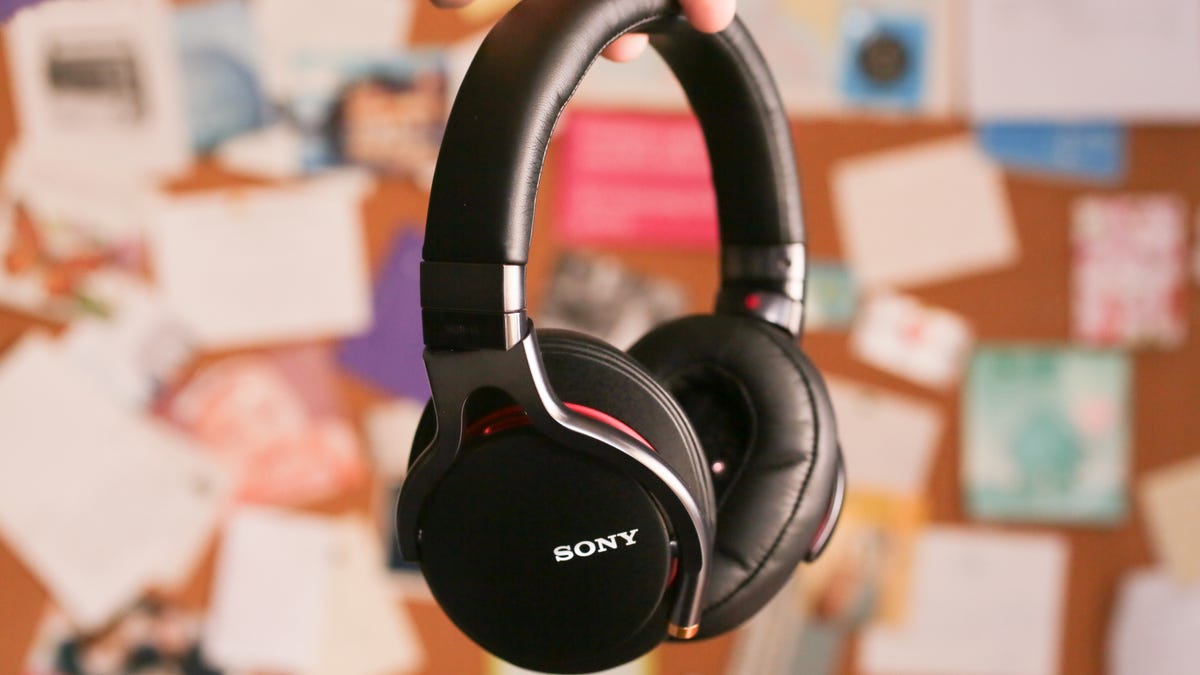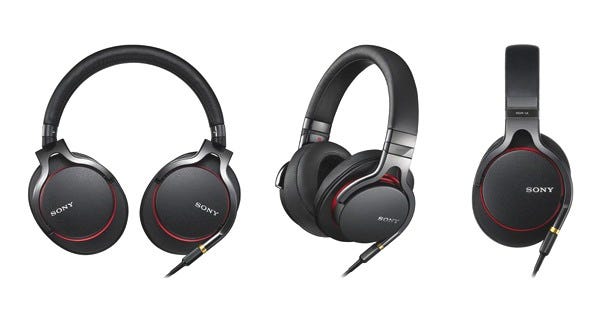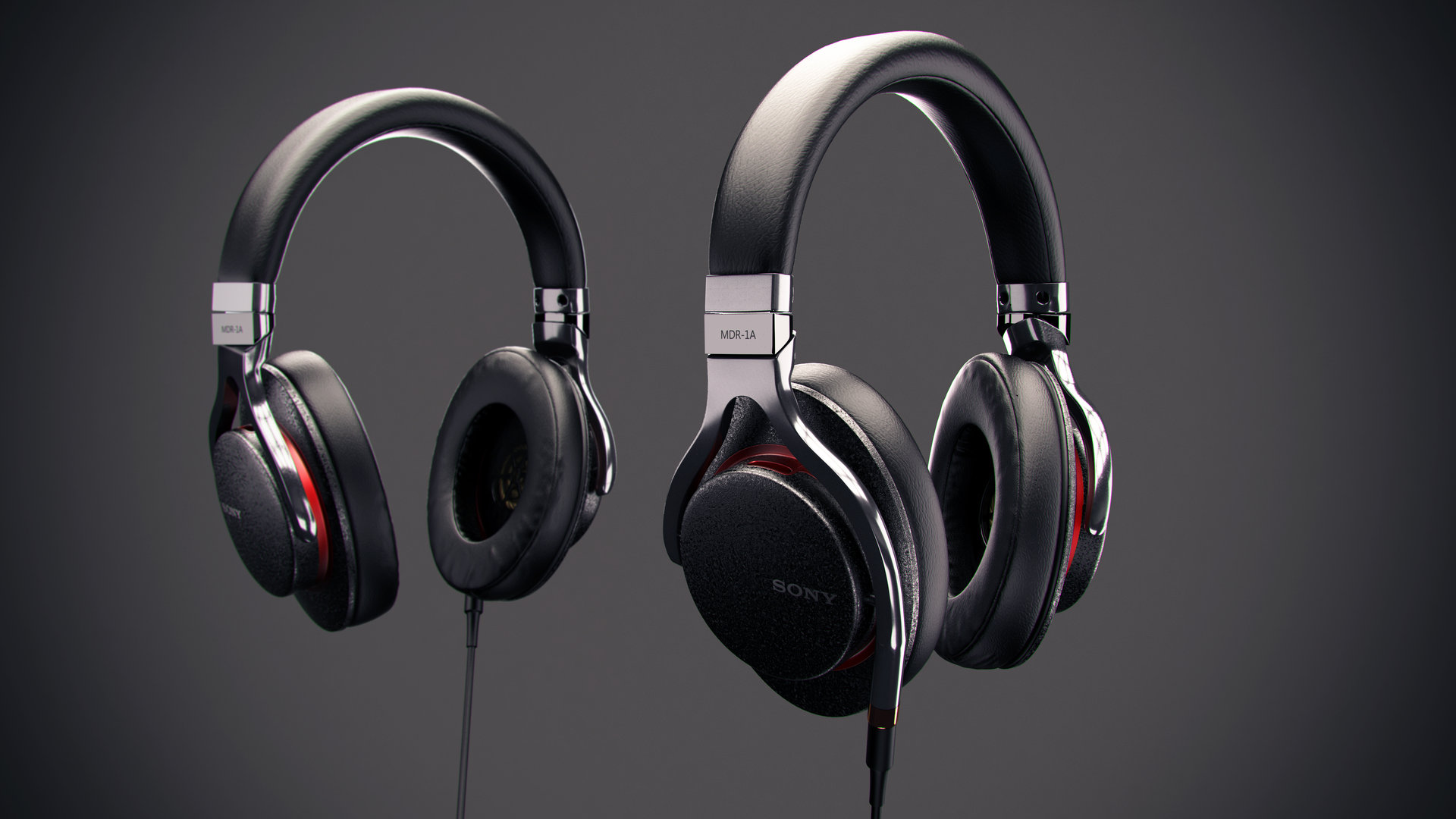This article will help you find the best between Sony MDR-1A vs MDR-7506.
DESIGN
Sony MDR-1A
The Sony MDR-1A has a high-end, sleek, and polished appearance. The ear cups are comparable to those of the MDR-100AAP and MDR-ZX770BN but with significantly higher padding and build quality. The headband is also generously padded and covered in a faux-leather material, adding to the quality impression of the headphones. They have a simple yet elegant black and grey color scheme with red accents and a textured back on the ear cups.

There is a silver and brown variation. However, it includes an integrated DAC and costs more than the standard MDR-1A. The Sony MDR-1A has a solid but lightweight design. The headband is strengthened with a thin metal and plastic frame that is flexible enough to withstand the moderate physical strain. The ear cups, while lightweight, are made of metal and plastic and can resist a couple of accidental drops without being damaged. The hinges are a little loose, but there aren’t many, decreasing the design’s potential weak areas.
Sony MDR-7506
Between Sony MDR-1A vs MDR-7506, the Sony MDR-7506 sports a simple over-ear style that seems plain but will suit most people. A few branding emblems stand out against the modest, all-black color palette. The large, oval ear cups are lightly padded and coated in a faux leather-like material, as is the wide headband. They appear cheap and will blend in, yet the minimal studio appearance and uncomplicated style will appeal to some listeners. These headphones have a subpar build quality at best.

They have a thin metal frame that helps to support the design, and they’re light enough to withstand a few falls without breaking. Nevertheless, these headphones have a cheap feel about them. The remainder of the design is too plasticky for their price, and the headphones creak a little when you put them on. The hinges are relatively fragile, and the wiring is partially exposed, which may be damaged over time. They’re well-made but not as long-lasting as headphones in the same price range.
COMFORT
Sony MDR-1A
When compared to their build quality, the MDR-1A is significantly lighter. It, combined with the superb padding on the earcups and headband, results in a comfortable listening experience that isn’t tiring even after a long period of use. However, because the earcup cushioning produces a relatively limited aperture for your ears, they may not fit as comfortably for all listeners. In terms of over-ear breathability, the Sony MDR-1A is approximately average.
They have a good seal, which keeps air from entering your outer ear. After an hour of listening, they will be pretty warm, but this is better than some of the other closed-back critical listening headphones we’ve tested, such as the Audio-Technica ATH-M50x. The Sony MDR-1A headphones are not the most stable. These stay put during casual listening sessions, and the audio cord will detach if linked to something, but they will rapidly slide off your head if used for running or working out.
Sony MDR-7506
The Sony MDR-7506 headphones are lightweight and comfy. The ear cups are large enough to comfortably accommodate most ears. They’re not too tight, so they’re not too painful to wear for long listening periods. Nevertheless, although being soft, the padding fabric used feels cheap and prone to wear and tear. It’s also a little harsher on the skin than the padding on some more expensive ones. The Sony MDR-7506 headphones are reasonably breathable, but they will still leave your ears fairly heated after extended listening sessions.

These have a closed-back over-ear design that limits airflow, so they aren’t ideal for exercising or working out but should suffice for leisure listening. These headphones are pretty light on the head. While this is helpful for comfort, it makes the fit less stable. They won’t fall out of your ears during casual listening sessions, but they’re not designed for sports or vigorous activity. When used when running or jogging, they will easily slip off your head. Also, the non-detachable audio wire is inconvenient and increases the likelihood of the headphones falling if it becomes entangled in something.
CONTROL
Sony MDR-1A
The control method for these headphones appears to be inadequate. They just have one Call/Music button that allows them to pause, play, and skip music. You won’t be able to regulate the volume level, which is frustrating, but the button provides decent feedback and is simple to operate. The Sony MDR-1A are over-ear headphones that are mid-sized and have large earcups that do not fold into the frame for a more compact configuration. This makes them difficult to carry around, especially if you don’t have a bag. They aren’t the most portable headphones, but the ear cups lay flat, which may be helpful in some scenarios.

Sony MDR-7506
The MDR7506 headphones are reasonably portable. The ear cups are approximately average size for an over-ear model, but the foldable design tucks them securely within the frame to save space. These won’t be the easiest headphones to carry around, but they will fit into most bags. They do not, however, come with a purse or case.
SOUND
Sony MDR-1A
The Sony MDR-1A has a firm frequency response constancy. For whatever reason, the right ear cup has more irregularity in the bass range. However, the most significant variation is roughly 4dB, which, while apparent, is not too severe, especially given that it occurs mainly in a restricted zone. These headphones perform better in the treble range (below 10KHz), with only minor differences between 5KHz and 7KHz. The Sony MDR-1A has a strong bass response. The LFE (low-frequency extension) is set to 10Hz, which is excellent. Low bass, which produces the thump and rumbles heard in bass-heavy genres, is flat but 2dB above our neutral aim. Mid-bass, which is responsible for the bass guitar body and kick drum punch, is likewise flat and 2dB above our neutral aim.

The high bass, responsible for warmth, is overemphasized by 1.5dB, but most of this occurs below 200Hz. Thus, it does not contribute muddiness to the bass. The Sony’s bass is deep, powerful, and slightly hefty but not boomy or congested. The mid-range performance is outstanding. The low-mid region is underemphasized by 1.5dB, which thins out vocals slightly but allows for additional punch in the bass range. Mid-mid and high-mid frequencies are practically perfect and within 0.7dB of our neutral aim. Overall, Sony’s mid-range is clear and well-balanced, which is critical for singing.
Sony MDR-7506
The frequency response is consistent. The most significant variance in the bass range across our five human volunteers is roughly 5dB, which is faint but perceptible. Below 10KHz, the treble range is more consistent, with a maximum divergence of roughly 5dB and in relatively narrow regions. The bass is fantastic. The LFE (low-frequency extension) frequency is 11Hz, which is outstanding. Low bass, responsible for the thud and rumble heard in bass-heavy genres such as EDM and Hip-hop, is 3dB above our neutral aim.
-1-p.jpg?v=f5306aa0-a896-43c4-954d-94881dde1064)
This adds a touch of extra thump to their bass, which some people may enjoy. Mid-bass is flat and even, yet overemphasized by 2.5 dB. It is responsible for the body of bass guitars and the punch of kick drums. High bass, which is responsible for warmth, is well-balanced, which is excellent because overemphasis in this area is damaging to sound and is typical in bass-heavy headphones. Overall, the Sony provides a robust and snappy bass that isn’t boomy or muddy. The Sony 7506 has a strong mid-range. The response is flat and even throughout the spectrum, within 1dB of our neutral target. This means that voices and main instruments are well-balanced and precise. The dip around 250Hz may thin down vocals slightly, but it will also assist in bringing out the punch and kicks in the bass range.
ISOLATION
Sony MDR-1A
The isolation performance of the Sony MDR-1A is subpar. They don’t accomplish isolation in the bass range, where airplane and bus engines rumble. The isolate by roughly 7dB in the mid-range, which helps shut out speech, which is below-average. They isolate by 30dB in the treble range, filled by sharps sounds like S and Ts. The leaking is acceptable. The majority of the leakage occurs between 500Hz and 5KHz, which is a pretty broad frequency range. Yet, the total degree of leaking is not particularly loud. With the music at 100dB SPL, the leakage at 1 foot away averages 41dB SPL and peaks at slightly around 50dB SPL, roughly the same as an average office noise floor.
Sony MDR-7506
In Sony MDR-1A vs MDR-7506, this headphone’s isolation performance is poor. These headphones lack active noise cancellation (ANC) and do not isolate well in the bass range. This means they’ll be able to hear the rumble of bus and airline engines. They isolate by 8dB in the mid-range, useful for speech blocking. They achieve 30dB of isolation in the treble range, inhabited by sharp sounds like S and Ts. The Sony MDR-7506 has a low leakage rate. The majority of the leakage occurs between 2KHz and 5KHz, which is a relatively narrow frequency band. The overall level of leakage is also low. When the music is turned up to 100dB SPL, the leakage at one foot away averages 37dB SPL and peaks at 50dB SPL, which is the same as the noise floor in most offices.
MICROPHONE
Sony MDR-1A
The in-line microphone’s recording quality is roughly average. The dip between 100Hz and 400Hz makes recorded/transmitted voice sound slightly thin. However, the increase in low bass renders this mic susceptible to pops and rumbling noise. The 4.1KHz HFE (high-frequency extension) results in a speech that lacks detail and presence.

Yet, this does not affect speech comprehension because speech intelligibility is mostly determined by the 500Hz-4KHz frequency range. The MDR-1A’s in-line microphone performs mediocrely in terms of noise reduction. They achieved a speech-to-noise ratio of 17dB in our SpNR test, indicating that they are best suited for quiet and moderately loud surroundings because they would struggle to fully differentiate speech from ambient noise in noisy places.
Sony MDR-7506
The in-line microphone’s recording quality is roughly average. The dip between 100Hz and 400Hz makes recorded/transmitted voice sound slightly thin. However, the increase in low bass renders this mic susceptible to pops and rumbling noise. The 4.1KHz HFE (high-frequency extension) results in a speech that lacks detail and presence.

Yet, this does not affect speech comprehension because speech intelligibility is mostly determined by the 500Hz-4KHz frequency range. The MDR-1A’s in-line microphone performs mediocrely in terms of noise reduction. They achieved a speech-to-noise ratio of 17dB in our SpNR test, indicating that they are best suited for quiet and moderately loud surroundings because they would struggle to fully differentiate speech from ambient noise in noisy places.
CONNECTIVITY
Sony MDR-1A
These wired headphones do not have a Bluetooth connection. Check out the Sony WH-1000XM2 if you’re looking for an excellent Bluetooth headset for casual use. The Sony MDR-1A has a direct cable connection with virtually little lag. Sadly, this also implies that they are constrained by the range of the wires provided. The Sony MDR-1A comes with a non-os-specific audio cord, an in-line remote, and a microphone that is console-compatible.
When connected to your PS4 or Xbox One controller, they will enable audio and voice chat capability. However, you may require a headset adapter for your PC if your PC does not have a four-pin audio connection like tablets and phones do. There is no dock with these headphones. Choose the SteelSeries Arctis 7 if you require a headset with a dock and a wired connection for gaming or viewing movies.
Sony MDR-7506
Between Sony MDR-1A vs MDR-7506 the Sony MDR-7506 headphones are corded and do not support Bluetooth. The Plantronics BackBeat Pro 2 is a solid Bluetooth headset for casual use. Because they are connected, these headphones have almost no delay. Sadly, this also implies that they are constrained by the audio cable’s range. There is only one non-detachable audio wire with these headphones, and there is no in-line control. They will only work with your PS4 or Xbox One controller to provide audio. The MDR-7506 lacks a dock. Choose the SteelSeries Arctis 7 if you require a headset with a dock and a wired connection for gaming or viewing movies.
CONCLUSION
Talking about Sony MDR-1A vs MDR-7506, Sony MDR-1A for office use, is adequate. At moderate volumes, the Sony MDR-1A doesn’t leak much and features a pleasant design that you may wear for hours without boredom. They do not, however, block a lot of ambient noise, so if you work in a noisy and dynamic office, they may not be the best headphones for that use case. For office use, it is adequate at best. They don’t leak much so you won’t bother your coworkers.
However, they will not block the noise of a busy office. Good for gaming. They offer a good sound, a comfy design, and an excellent in-line microphone that works with the PS4 and Xbox One. But, they will not be as convenient as wireless gaming headphones, and they are not programmable, so you will not be able to tailor your sound profile to the game you are playing. Gaming performance is below average. They offer superb sound and a low latency wired connection, but they aren’t as portable or configurable as other wireless gaming headphones. They also lack a microphone, but if you don’t require voice chat, they could be a good solution for consoles and Computers because they will deliver audio for both the PS4 and Xbox One. Hopefully now you know the best between Sony MDR-1A vs MDR-7506.




